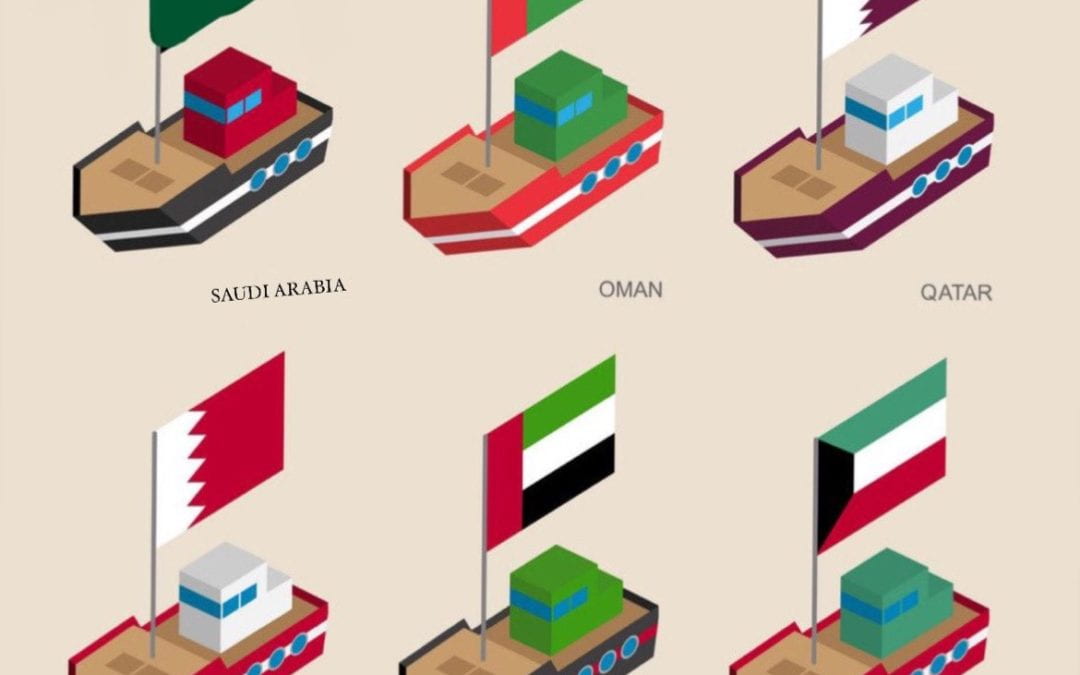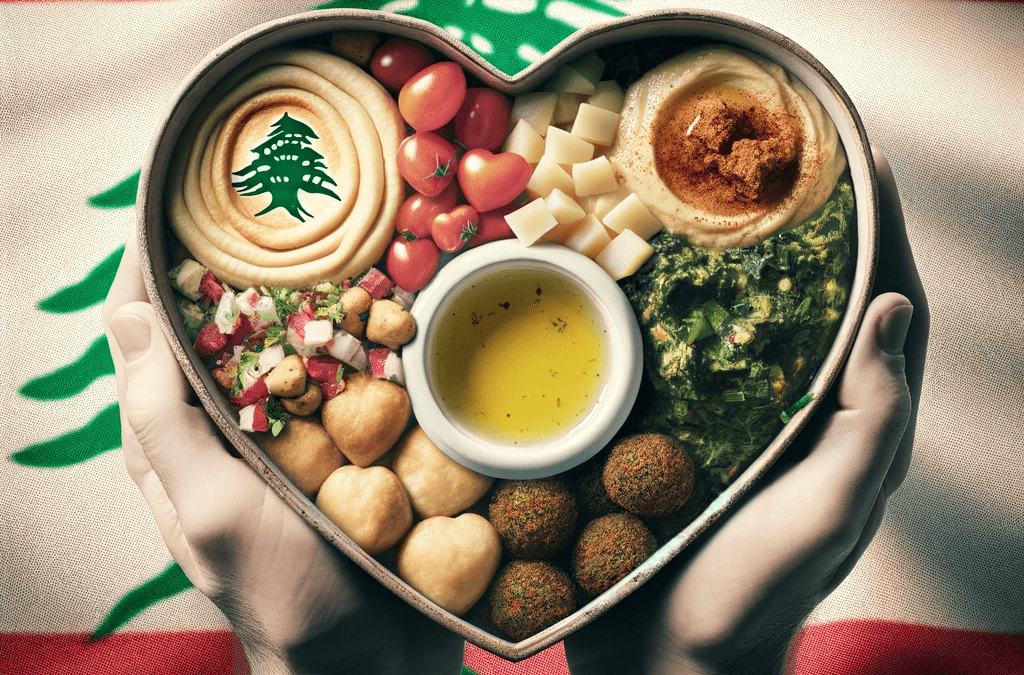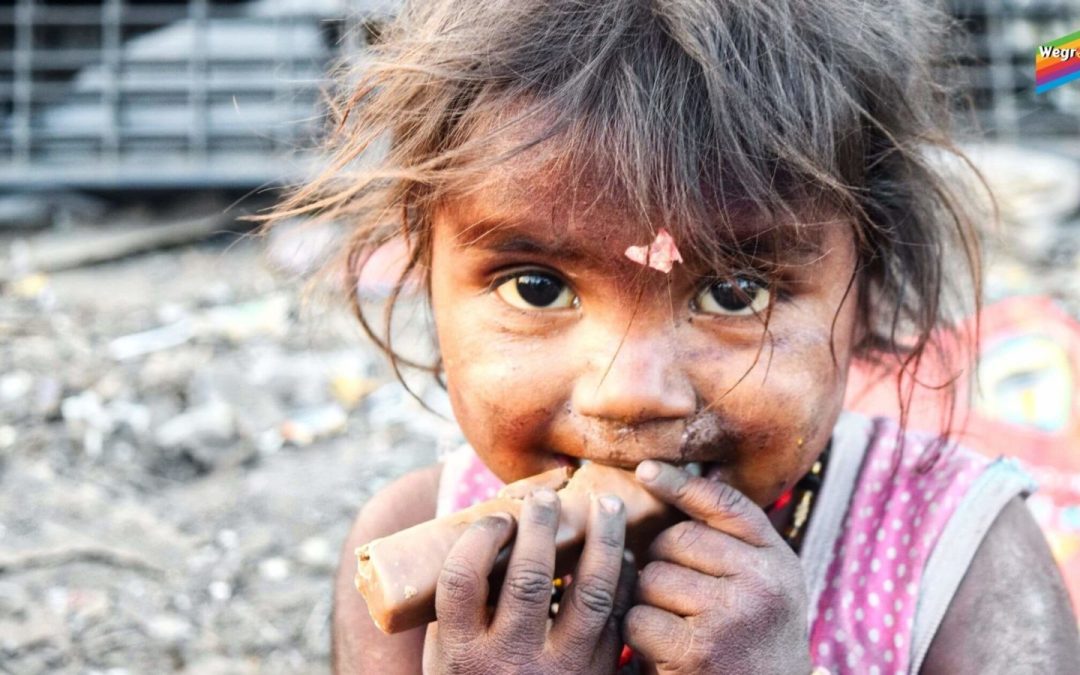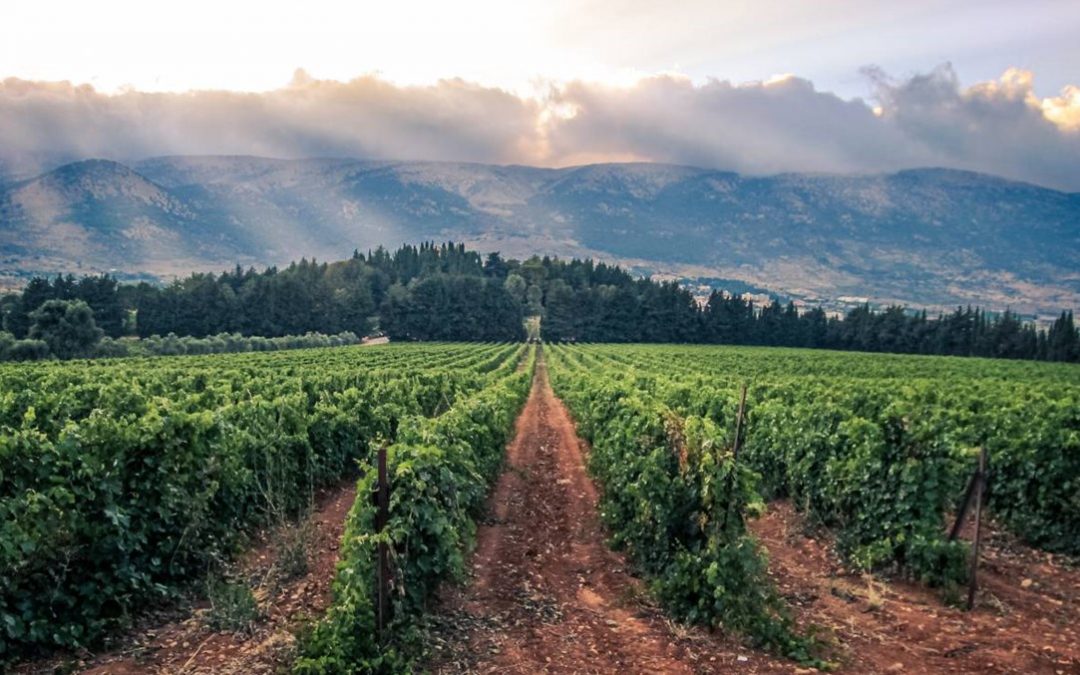
by hmm73 | Nov 8, 2023 | Visualization
The percentage of Food export in Gulf Countries in 2019 is extremely low and the imports is relatively high comparing to exports. Gulf countries exhibited a notable disparity between food exports and imports, with food exports being exceedingly low and food imports substantially higher. Qatar, Kuwait, and Saudi Arabia, in particular, heavily relied on food imports to meet their consumption needs. This underscores a regional dependence on international food sources and highlights the importance of addressing food security to ensure stable access to essential resources in the Gulf.
Impact of Tax rate on Import and Export
The tax rates in Gulf countries as seen in the map can linked to the imports and exports, reveal an interesting correlation. Lower tax rates, such as those in Qatar and Kuwait, can encourage trade and potentially offset their low food exports and high food imports. Conversely, higher tax rates, as seen in Oman, might contribute to higher food import figures. The relatively lower tax rate in the UAE supports its role as a regional trade hub, which is reflected in its balanced import and export figures. The interplay between tax rates and trade statistics underscores the significance of fiscal policies in shaping the trade landscape of these Gulf nation
Agriculture & Industry
Influence of Water Withdrawals in Agriculture and Industry on food imports and exports
The water withdrawals data indicate the extent of agriculture and industrial activity in Gulf countries. Higher agricultural water withdrawals, as seen in Saudi Arabia and Oman, suggest self-sufficiency in food production. Meanwhile, countries with lower agriculture withdrawals, like Kuwait, may rely more on food imports. These water withdrawals can be linked to food import and export dynamics, influencing food security and trade strategies in the region.
Influence of Employment in Agriculture and Industry on food imports and exports
Higher Agricultural Employment & Food Trade:
Oman and Saudi Arabia, with higher agricultural employment, might have a more significant capacity for domestic food production. This could relate to their lower food imports and potential for food exports despite modest industrial growth.
Lower agricultural employment in Bahrain, Kuwait, Qatar, and the UAE could imply a heavier reliance on food imports due to limited domestic agricultural output, aligning with their higher food import figures.
Industrial Employment & Food Trade:
Qatar’s high industrial employment might suggest a lesser emphasis on agriculture, potentially leading to higher food imports despite economic diversification.
Other countries, with varying industrial employment rates, might showcase different levels of agricultural emphasis, influencing their food import-export dynamics.
Solutions
Investment in Agricultural Innovation: Encourage technological advancements and innovation in agriculture to boost productivity, creating more jobs and improving food self-sufficiency..
Tax Reform: Implement tax policies that incentivize investment in both agricultural and industrial sectors, promoting growth and job creation in these areas.
Education and Skills Development: Invest in education and training programs to equip the workforce with the necessary skills for employment in agriculture, industry, and other emerging sectors.
Sustainable Resource Management: Implement sustainable water and land management practices to support agricultural growth without compromising environmental resources, thereby ensuring long-term economic stability.
UN Goals
Goal 8: Decent Work and Economic Growth:
Employment in Agriculture and Industry: The distribution of employment in agriculture and industry reflects the economic structure of countries. Goal 8 emphasizes the importance of decent work and employment opportunities for sustained economic growth.
Food Import-Export Dynamics: Countries with higher agricultural employment might have stronger domestic agricultural sectors, impacting their trade balance in food. Conversely, higher industrial employment might affect the reliance on food imports due to potentially reduced emphasis on agriculture.
Tax Policies: Tax structures impact economic activities and employment opportunities. Favorable tax policies can stimulate growth in both agricultural and industrial sectors, contributing to Goal 8’s aim of fostering economic growth and decent work.
By focusing on inclusive economic growth, job creation, and enhancing productivity in both agriculture and industry, countries can contribute significantly to achieving Goal 8, ensuring sustainable and equitable economic development.
UN Goal Link – Goal 2: Zero Hunger:
Food Import-Export Dynamics: Countries with high food imports or low food exports often face challenges in achieving food security. Goal 2 aims to end hunger, achieve food security, improve nutrition, and promote sustainable agriculture.
Agricultural Practices: Stronger agricultural sectors (linked to lower food imports or higher exports) directly contribute to achieving Goal 2. Sustainable agriculture practices, as encouraged by the goal, can enhance food production and reduce dependency on imports.

by ckn05 | Nov 8, 2023 | Uncategorized
SDG 2, also known as Zero Hunger, aims to end hunger, achieve food security, improve nutrition, and promote sustainable agriculture. It’s a critical issue impacting numerous countries, challenging global efforts to achieve a world where everyone has enough nutritious food.
Food insecurity in Lebanon has been escalating, posing a significant threat to the health and well-being of its population. With a substantial portion of the Lebanese facing challenges in accessing sufficient and nutritious food, the situation calls for immediate attention.
The evidence lies in the data trends from 2017 to 2021, which reveal a stark increase in food insecurity. The percentage of the population experiencing moderate or severe food insecurity has more than doubled, climbing from 14.7% to 36.5%. Severe food insecurity has also tripled, rising from 4.2% to 12.6%. Concurrently, the prevalence of undernourishment has increased from 6.8% to 10.9% by 2020. These figures highlight a disturbing deterioration in food security, suggesting that an increasing number of individuals are unable to meet their basic food needs.
This rising tide of hunger is not just a statistic; it is the daily reality of families like that of Layla, a single mother who skips meals to ensure her children eat, and Youssef, an elderly man who once prided himself on providing for his family but now relies on food aid. Their stories are the true measure of this crisis, lending a face and voice to the stark numbers.
To fight against this phenomenon, Lebanon needs to:
•Invest in agricultural infrastructure to increase productivity and reduce dependency on food imports.
•Encourage sustainable farming practices to ensure long-term food security.
•Implement food assistance programs that provide direct support to those in immediate need.
•Strengthen policies that promote fair food prices and reduce market volatility.
The proposed strategies for Lebanon align with the United Nations’ recommendations and have been successful in similar contexts. For instance, countries like Jordan and Morocco have seen substantial improvements in food security and agricultural productivity through similar investments and policy reforms. These examples provide a blueprint for Lebanon, underscoring the feasibility and effectiveness of these measures.
The data clearly indicates that Lebanon is facing a growing food security crisis. It is crucial for policymakers to prioritize investments in agriculture, establish robust food assistance programs, and engage in regional cooperation to stabilize food markets. This is more than a policy imperative; it is a moral one. We have the means and knowledge to curb this crisis. What is needed now is the will and action.
As we stand at this pivotal moment, the call to action is clear and urgent. For the sake of every hungry child, every struggling parent, and every vulnerable elder in Lebanon, let us unite in our efforts. Let us work tirelessly towards achieving Zero Hunger, not as a distant dream, but as a reality within our reach. The time to act is now – together, we can turn the tide and ensure a future where food security is a right enjoyed by all in Lebanon.

by bia07 | Nov 22, 2022 | Uncategorized
SDGs were adopted by the UN in 2015 as a universal call to action to ensure that by 2030 all people enjoy peace and prosperity. They are 17 goals and goal 2 specifically is about creating a world free of hunger.
After steadily declining for a decade, world hunger is on the rise again, affecting nearly 10% of people globally, a crisis driven largely by conflicts and wars such as the war in Ukraine which is disrupting the global food supply chains and creating the biggest global food crisis since the second world war, by climate change and the Covid-19 pandemic.
828 million ppl suffered from hunger in the year 2021, which is 46 more from a year earlier and 150 m more than 2019.
45 million children under the age of 5 were suffering from wasting which increases children’s risk of death by up to 12 times.
149 million children under the age of 5 had stunted growth and development due to a chronic lack of essential nutrients in their diets.
2.3 billion people were severely food insecure, 350 million more compared to before the outbreak of the covid 19 pandemic.
3.1 billion people couldn’t afford a healthy diet reflecting the effects of inflation in consumer food prices stemming from the economic impacts of the covid 19 pandemic.
Looking at the side-by-side bar chart, we can see the Global Hunger Index values in 2021 and 2022. GHI is a tool that attempts to measure and track hunger. It is a 100-point scale with zero being the best score meaning no hunger and 100 being the worst. The graph clearly shows us that the global hunger index values became worse in 2022 compared to those in 2021. For example, GHI for Congo was 30.3 in 2021, and it increased to 37.8 in 2022.
This line chart shows us that even though the % of stunted children was declining, back in 2019 it started to rise again and is continuing according to research.
There is no single idea that will solve world hunger alone. But there is a range of solutions available to us from an institutional level to an individual level that collectively can bring us to zero hunger.
Sustainable food: which can be achieved through funding projects so people can provide food for themselves in a sustainable way and are able to create their own steady supply of food instead of relying on aid from foreign countries.
Access to education: which is the best weapon against poverty and hunger because it means better opportunity and more access to income and food.
Empowering women: which has a direct correlation with hunger. Empowering women to gain access to food, be providers and lead their families has had a major impact on food access and the ability to change financial situations.
Transitioning: people suffering from hunger need help transitioning into a state of self-dependence. Some organizations have already started supporting with this transition. For instance, 15 feeds family starts by providing families with food, but then slowly find solutions to empower families to be self-sufficient because this will allow for a certain food income while relying on donations does not always guarantee food.
Food donations and school campaigns: even though we want the world to be self-sustainable, this is something that will not happen overnight, so it is important in the meantime to lend a helping hand. Donations have had an immerse impact on world hunger, for example organizations such as food for all was able to raise 60 million $ to fight world hunger in the year 2019. Besides, the World Food Program has been supporting school feeding for 6 decades. In 2020, 15 million school children received nutritious meals and snacks from WFP, and working with governments to build capacity, it helped strengthening the national school feeding programs of 65 countries, benefiting a further 39 million children.
Speaking of facts, governments, authorities, and NGOs worldwide need to urgently react and cooperate in the face of one of the largest challenges the world community is faced with. Extra effort to tackle the crisis should be put in place and proposed solutions which some of them have already been implemented need to expand into larger scales to be able to address the issue because what is being done is fine but never enough in the face of increasing rates.

by Mahdi Mohammad | Apr 15, 2022 | Uncategorized
Lebanon is suffering from an economical and financial crisis since 2019. The world bank has classified this crisis as one of the worst 3 crises since mid-nineteenth century. One main reason behind this crisis is the high external debt and its services which have led eventually to a great negative impact on Lebanon’s GDP. One way to control the increase of this debt is working on the development of the agricultural sector.
Problem:
The external dept as well as its services have increased dramatically over years. This increase was highly sharp between the years 2019 and 2020. At the same time, this high increase in the debt was associated with a decrease in GDP growth, specifically between the years 2016 and 2020.
Solution:
The contribution of agriculture in the GDP of Lebanon was decreasing over years. So, supporting the agricultural sector would be one of the solutions that can help freezing the increase in debt. In fact, Lebanon has the required elements to do that, i.e., a cultivatable land and water resources. According to the World Bank collection of development indicators, Lebanon has 64.32% of its land cultivatable.
Supporting the agricultural sector means that the government is requested to work on a plan that can improve the agricultural sector. This is important as a development in the agricultural sector would be reflected as an increase in the agricultural production. Therefore, this will lead to a decrease in the imports and an increase in the exports of agricultural products. Finally, all of this would cause a higher contribution of agriculture in GDP and a decrease in borrowing and debt levels.
This proposed solution has been adopted by many other countries to support their economy. According to the World Bank, agriculture has accounted for more than 25% of GDP in developing countries in the year 2018.
Findings:
- Developing agricultural sector is essential for the development of the Lebanese economy.
- Improving the agricultural sector will help Lebanon in getting out of the economic and financial crisis.
Recommendation:
The government should construct and implement a plan that can enhance the agricultural sector in Lebanon.
by nae51 | Apr 15, 2022 | Uncategorized

2022. Climate change. DROUGHT. Increasing DROUGHT periods. Shorter Time Between these DROUGHT periods. FAMINE.
Meet Zahi. Zahi is a 10 year old Somali boy who lives in Somalia. He has been suffering from acute malnourishment for a good while now.
In fact, as of 2022, it was reported that around 4.1 Million Somalis are just like Zahi: all acutely malnourished, or even severely malnourished. In other words, this means that 1/4th of the Somali population is at the very least acutely malnourished. What can that cause, you may ask? Illnesses, poor physical and cognitive development, and ultimately, death.
This makes Somalia the hungriest country in the world. If you are wondering how hunger is measured, it is by using a metric entitled the Global Hunger Index (GHI). The latter is calculated by gathering data about:
- Undernourishment: share of people in a given region/country whose caloric intake is deemed insufficient,
- Child Undernutrition: share of children under 5 who have low weight for their height (wasted children) and thus suffer from acute undernutrition, but also the share of children under 5 who have a low height for their age (stunted children)- which indicates chronic undernutrition,
- Child Mortality: mortality rate of children under 5 who die because of inadequate nutrition and unhealthy environments.
To visualize the world’s hunger, the map that can be viewed in Sheet 1 below or on this link has been created.
We notice that Somalia is indeed the only country in the world with an extremely alarming Global Hunger Index, with an average GHI of 58 over the past 20 years.
What makes the situation in Somalia this dire and helpless? Well, to say the least, poverty coupled with and aggravated by governmental corruption, several outbreaks (to list a few: cholera, malaria, measles, corona), inflating prices (notably with the current Russia-Ukraine crisis) and most importantly the series of drought periods that have been happening consecutively over the past years, with the 2011-2012, 2016-2017 and 2021-2022 crises counting as the 3 major and most recent drought crises that have happened (and are still happening). Moreover, drought means death of livestock, no water, parents abstaining from eating to feed their children the very little food they have access to, and overall hunger. One must note that droughts have always happened in Somalia (and in the Horn of Africa generally), meaning that the Somalis are used to drought, and they had adapted to it, knowing how to pick themselves up and continue. However, with climate change, these drought periods have become more acute and consecutive, with shorter periods separating them, hence disabling Somalis from the chance to recover from the last drought.
Alright, now what is the solution?
The deployment of an immediate humanitarian response: gathering funds through non-governmental organizations or even governmental donations which aim (but are not limited to) to sending emergency water supplies, sending food donations, treating the malnourished, distributing dietary supplements, opening and running health supplies but also giving out cash and livelihood support to those who are most in need.
Does this help?
Yes. It does.
As a matter of fact, just like the graph on Sheet 2 below shows (or the one you can see on this link), in 2012, Somalia’s GHI was measured at an all time high of 65. Thanks to the donations and the humanitarian responses that happened between 2011 and 2020, Somalia’s GHI dropped to 50.8. Magical, right? Arguably the GHI all time high of 65 could have been prevented in the 2011-2012 drought crisis had the international scene acted quicker than they did: in fact their response was so slow that thousands had died by the time aids reached. It was indeed deemed a failure. Moreover, back then only 56% of the UN’s funding appeal for Somalia were met by donors, whereas during the 2016-2017 drought crisis, the international scene responded quicker and more acutely, with 68% of UN’s funding appeal for Somalia being met by donors.
However, it is to be noted than today, in the ongoing 2021-2022 drought crisis, merely 2.3% of the UN’s total funding appeal for Somalia have been met by donors. 2.3%. Furthermore, according to Mohamud Mohamed, Save the Children’s Country Director in Somalia: “Donors have a narrow window to prevent a major humanitarian disaster in Somalia (…)We’re worried that the political environment globally is overshadowing the humanitarian suffering of the Somali people.” As Mohamed said, the eyes of the world are focused on Ukraine, and are overlooking the rest of the world. Unequal treatment kills.
And the time, my friends, is ticking.
Written by Nour El Saadi.




